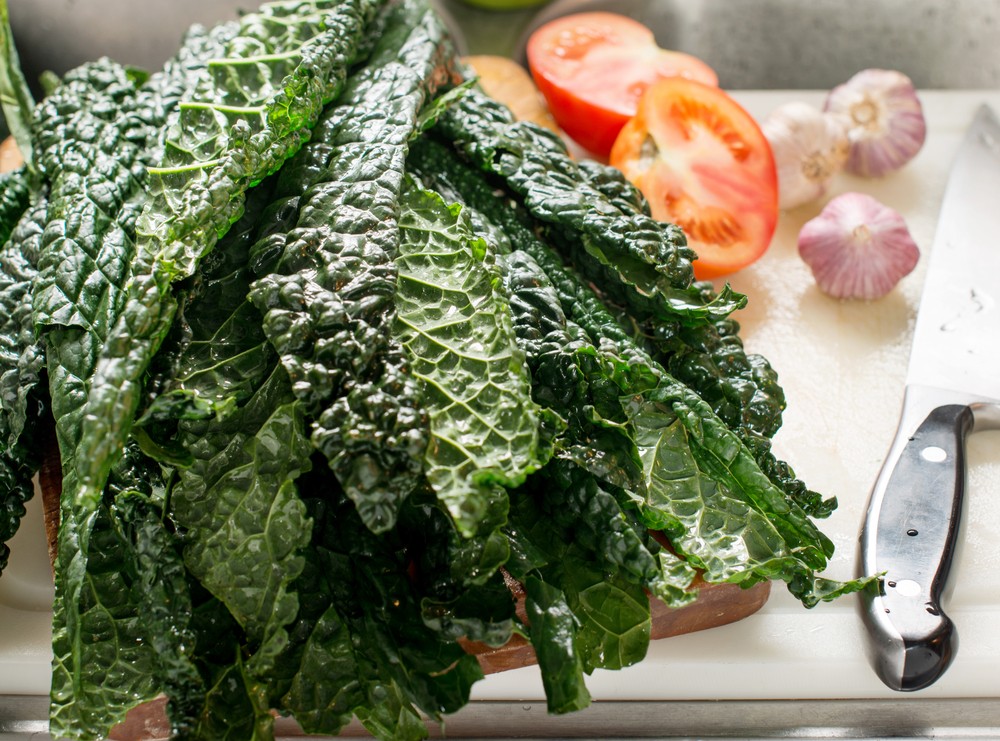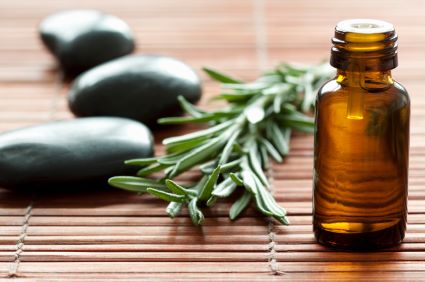
This time of year, as the temperature cools, a molecular miracle is happening on farms everywhere: the kale is getting even better. Touched by the chill, kale gets sweeter, as the sugars start to concentrate. And as the rest of the garden succumbs to the winter, kale stands strong. Kale is a frequent topic of conversation in my life, especially as we ramp up to National Kale Day on October 1, which I cofounded. As kale has gained popularity, I've heard some scary comments from people who just don't know better. Like the woman who recently told me, with a knowing smile, that we “don’t absorb any nutrients from kale.” I've heard everything from worries that kale is harmful to human health to the misperception that it's a new food, so I thought it was time to set the record straight. Kale is everywhere right now. In chip form, in your juice, in your smoothie, in your nail polish. Superfood cynics will be happy to hear then; it’s not the be all and end all of the superfood pyramid.
As a kid growing up in a lower-middle class family in northern Canada, the idea of eating leafy green vegetables such as kale would have likely grossed me out. Meat and grains constituted the majority of our family meals, and I trusted that my parents knew we were getting the nutrients we needed to be ‘healthy.’ If only I knew then what I know now.
Kale is indeed incredible, but not many people know about its health-revolutionizing properties. Here are 14 things everyone should know about kale:
1. Kale Has A LOT Of Vitamins & Minerals
1 cup of raw kale has just 33 calories yet contains 684% of vitamin K, 134% of vitamin C, 206% of Vitamin A plus iron, folate, omega-3s, magnesium, calcium, iron, fiber and 2 grams of protein. Now that’s the definition of nutrient density.
2. #GotKale? Hello Calcium!
1 serving of kale has more absorbable calcium than a …
There are molecules in kale called ‘goitergens’ that can compete with iodine for uptake into the thyroid. Theoretically, a diet very low in iodine (seafood, seaweeds, iodized salt) and very high in kale (say, juicing a bushel of kale every day), could cause problems.
Based on the current science, a more appropriate worry would be eating excess iodine in seaweed and kelp or consuming too many environmental toxins like BVO, a chemical found in flame retardants and in many generic soda brands. Kale is one of the only vegetables which you can whip into a smoothie, chop-up into a salad, squeeze into a juice, bake to become an edible chip, and mix into a cocktail.10. Kale Has Unmatched Culinary Versatility
11. Did I Mention How Cheap It Is?
Kale is one of the few superfoods available to most people at a price of $2-3 for an organic bunch of leaves.
12. Kale Has Many Cousins
There are so many varieties of kale available, each with their own distinct flavor and texture. Try mixing up your usual (curly green) kale with other varieties such as dino kale, premiere kale, redbor kale, Siberian kale, walking-stick kale, red Russian kale, or kamome red kale.
13) Kale Is So Simple To Grow
While cold weather may be kale’s preference, you can grow it during any season and in most climates. The flavor, output and duration from seed to harvest will change depending on the temperature, weather patterns, variety and soil condition, but kale is a hearty crop that is willing to adapt to our expanding desire for it. With that said, it can tolerate temperatures as low as 20F degrees, but will start to turn bitter and become tough in temperatures over 80F degrees.
14) You Can Absorb The Nutrients From Kale In Its Raw Form
Cooking kale frees some nutrients like magnesium and decreases others, like heat-sensitive folate. But consuming kale in any form delivers fiber, protein, omega-3s and a bevy of vitamins and minerals. I suggest mixing it up by sautéing, blending raw, or baking.Whether you’re 16 or 60, it is never too late to start introducing kale into your diet. With so many amazing benefits, it’s literally nature’s medicine. So what are you waiting for? Below is a link for more information about kale, including info about the benefits of kale for our brain and more delicious recipes. Good luck and happy kale eating!
Now we all know (or should all know) that you need to eat combinations of foods to get the maximum nutritional benefit – like eating vitamin C in the same meal as iron to help increase iron absorption. But there are certain foods that are pretty darn great for you all on their lonesome.
Please Read this Article at NaturalBlaze.com





Leave a Reply